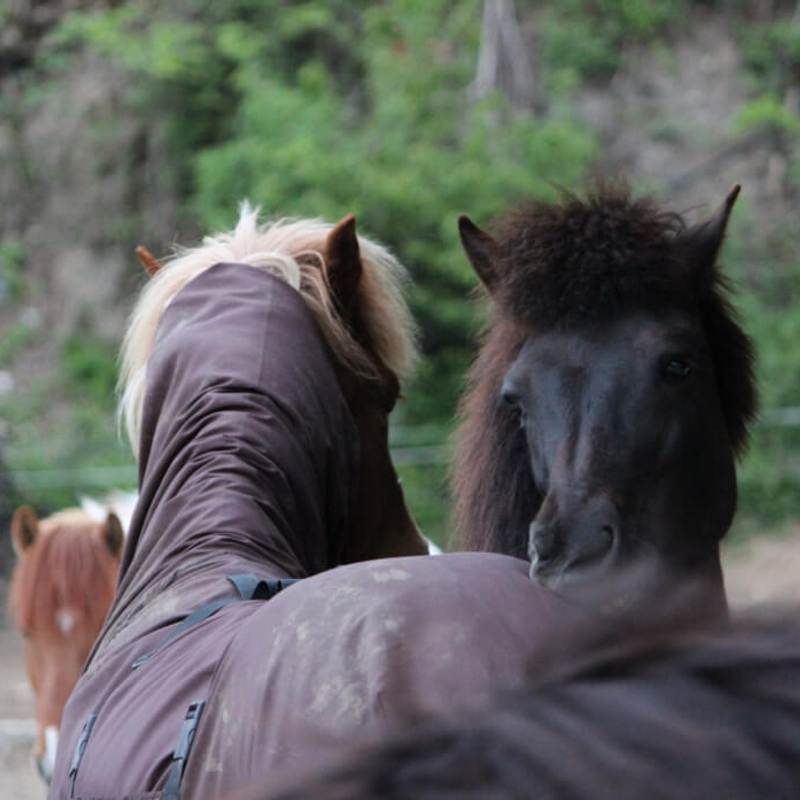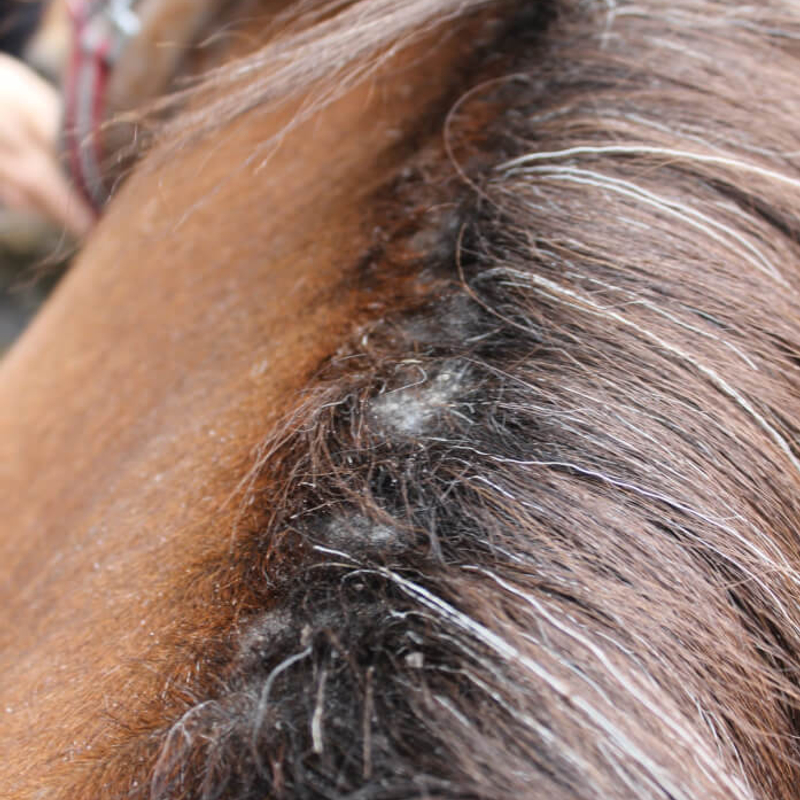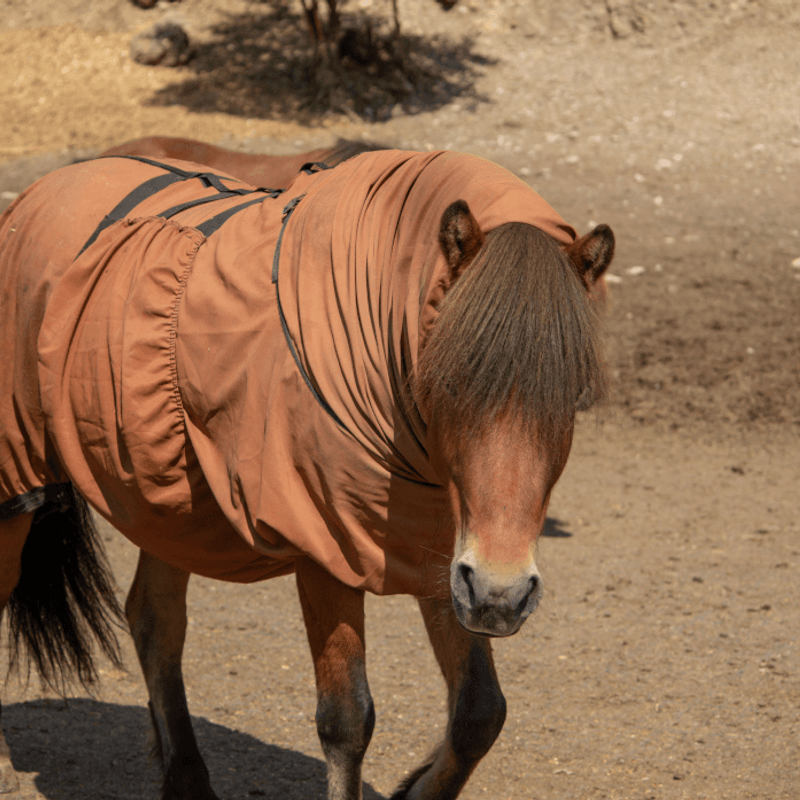Summer Eczema
Sweet itch, also known as insect bite hypersensitivity (IBH), is the most common allergic skin disease in horses. It manifests as chronically recurring seasonal allergic dermatitis.

What is the trigger?
After a long list of suspicious triggers in the past, including fungi, parasite larvae in the stomach, parasites in the skin, diet, climate, unsanitary conditions, kidney, liver or spleen dysfunction, too little exercise or food allergies, the Triggers identified and scientifically confirmed: proteins from the salivary gland that are produced during insect bites of the genus Culicoides spp . be transmitted. Culicoides spp. übertragen werden.
Insect saliva is a complex mixture that is released with its salivary gland proteins during an insect sting to prevent blood clotting. To date, more than 700 species of mosquitoes of the genus Culicoides have been described, of which about 130 are bloodsucking.
Summer eczema is typically described as a classic type I allergy.
Although sweet itch is the best studied and characterized allergic disease in horses, treatment options are still poor and far from satisfactory. That is why we make it our task to put an end to the suffering by developing a vaccine that treats summer eczema therapeutically and prevent it prophylactically.
Symptoms?
Clinical signs are severe itching, which leads to severe scratching of the base of the tail, mane, withers and stomach. This leads to hair breakage, lichen formation on the skin and crust formation. Affected lesions are characterized by thickening of the upper three layers of the skin, stratum corneum, epidermis, and dermis combined with fibrosis. In addition, there is evidence of acute inflammation, characterized by edema and inflammatory cell accumulation, located in perivascular clusters in deeper parts of the dermis.
Affected horses suffer from bald to bleeding wounds and sometimes even skin ulcers, which are caused by the severe itching, throughout the summer season. Mites, bacteria, or fungi can cause secondary infections in these lesions. This additionally promotes the infiltration of inflammatory cells into the affected lesions and accelerates the inflammation.


Who is affected?
Since no mosquitoes of the genus Culicoides Culicoides have been found in Iceland so far , exported Icelandic horses are particularly susceptible and a disease prevalence of more than 50% has been observed for exports to Europe. The prevalence of summer eczema increases significantly with age. Horses introduced between the ages of seven and 15 have an extremely high risk of 96%. They usually develop eczema in their third or fourth season outside of Iceland.
Basically all races can suffer from sweet itch. In addition to Icelandic horses, it was mainly described for quarter horses, thoroughbreds, Arabs, warm-blooded horses, draft horses, Frisians, Shire horses and various pony breeds. Around 10% of horses worldwide are affected by sweet itch, while the incidence of diseases is related with the geographical distribution of Culicoides spp.
Although sweet itch is the best studied and characterized allergic disease in horses, treatment options are still poor and far from satisfactory. That is why we make it our task to put an end to the suffering by developing a vaccine that treats summer eczema therapeutically and prevent it prophylactically.
